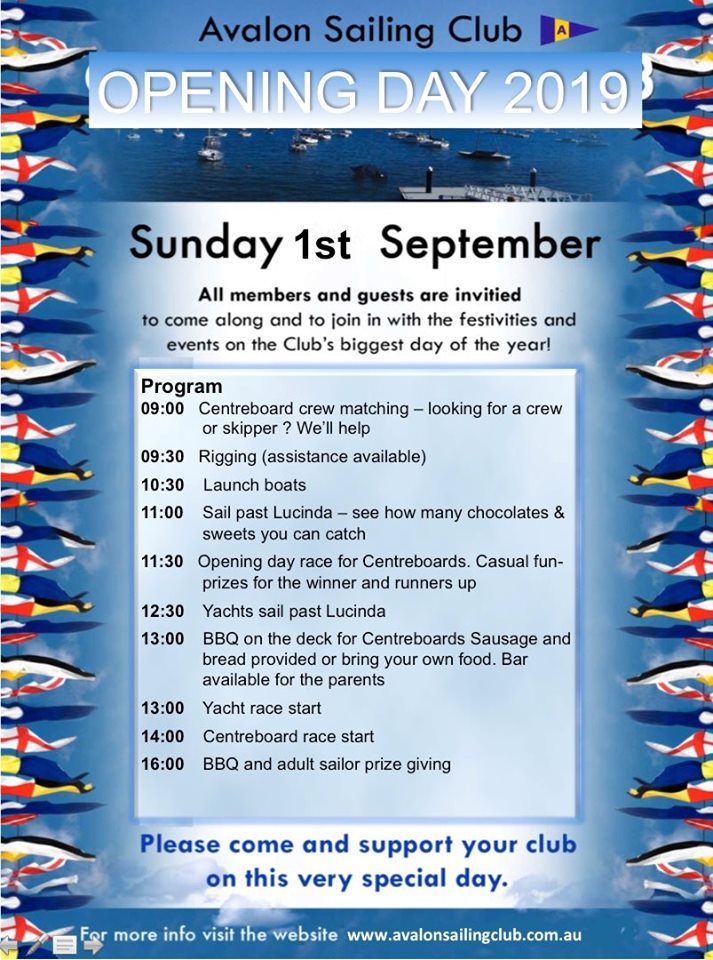On The Verge Of The 2019-2020 Sailing Season - Historic Insights From The Australian National Maritime Museums 1890 Pitt Water 'Era' Yacht Collection
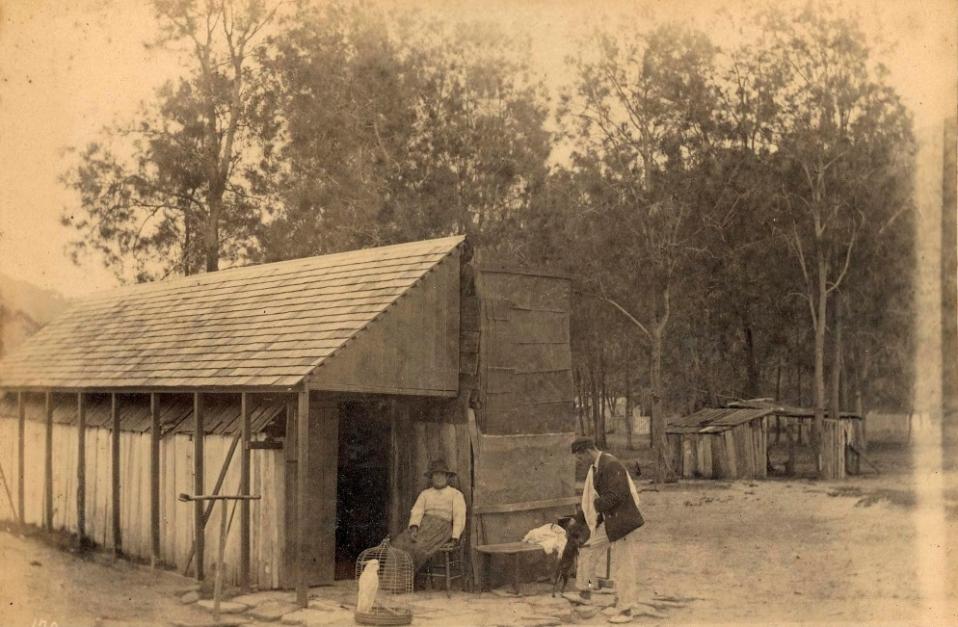
Pittwater, the estuary itself, has long been a rendezvous for brilliant watermen and women from the thousands of years prior to European arrival, right through colonial eras and into the days when Sydney yachtsmen began to build Australian inspired yachts and bring them here for 'seasonal'racing and regattas and simple enjoyment of the great outdoors away from 'Sydney Town'.
In fact Pittwater almost had a chapter of the Royal Sydney Yacht Squadron with one member, Dr James Frederick Elliot, purchasing lands at Careel Bay for the purpose a few decades after members had first started visiting The Basin.
An album of wonderful earlier photographs of Pittwater recently donated to the Australian National Maritime Museum, 'Photographs of boating on Pittwater including steam yacht ENA' circa 1890, includes views on board the yacht ERA, the crew of ERA, antics on board, fishing off West Head, picnic scenes, WAITANGI and ELECTRA, racing, the launch of the TUFA, men and women in rowing boats, scenes around Sydney Harbour and more. The album, of 55 pages, was a Gift from Tim McCormick Rare Books and shows there are still many more items around that show Pittwater and her environs than have been seen so far and underline the vital part in our heritage and history, as much as showcasing current developments, the Australian National Maritime Museum has.
The National Maritime collection contains a rich and diverse range of over 140,000 historic artefacts. Using the search term 'Pittwater'brings up a vast array of images and insights, many of them of those celebrated earlier Pittwater Regattas and the grogeous yachts and motor launches that once massed here around Christmas and into New year's each year.
The Australian National Maritime Museum is Australia’s national centre for maritime collections, exhibitions, research and archaeology. The museum, at Darling Harbour, presents a changing program of stimulating exhibitions and events to share Australia’s maritime history and connect the stories, objects, people and places that are part of our country’s narrative. The ANMM welcomes over 850,000 visitors annually including families, interstate and international tourists. Over 13,000 members support the museum and regularly enjoy special events and activities. It's well worth a visit or two if you haven't been. To find out more about what's coming up, visit: www.sea.museum
In the collection's album 'Photographs of boating on Pittwater including steam yacht ENA', one of these images appears to show the terraces of gardens that once went upwards on the hills above the Basin, as mentioned by Jim Macken in one of his great history books, Sally Morris of the Basin:
.jpg?timestamp=1567062868843)
It is due to the existence of the ANMM and the generosity of Mr. McCormick, that reports from those times of these fleets, some of which have run here as insights, are illuminated by the images in this album.
Those featuring the yacht Era and other yachts at Pittwater when it as still called 'Pitt Water' bring back scenes of Springs, Summers and Autumns past.
As our based on the Pittwater estuary sailing clubs commence their own Open days and Open of Sailing Season Celebrations, a few insights into those who sailed here, for fun and to test their sailing skills, a few generations ago.
Among these images are the owner and crew of 'Era', one of those celebrated early Australian-designed and built yachts that eventually ended her days as a fishing vessel in Western Australia.
THE YACHT 'ERA.'
The yacht 'Era' was designed by Mr. Walter Reeks, Marine Architect of this city, and built for Mr. A. G. Milson, Commodore of the Royal Sydney Yacht Squadron, by Geo. W. Ellis, of Balmain, and launched from the latter's shed on 5th December, 1887.
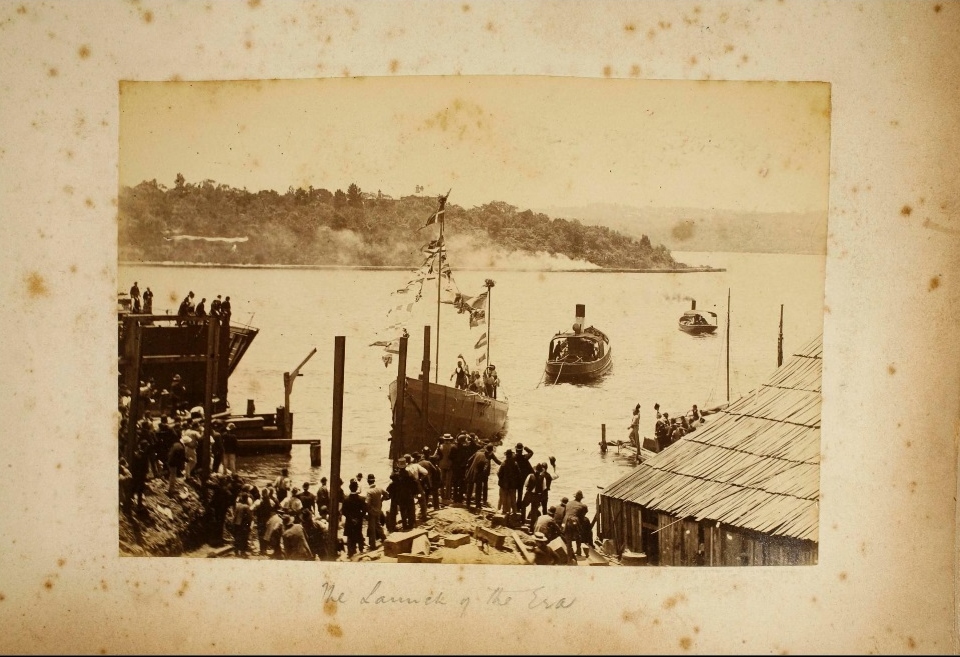
Launch of the Era, from ANMM/McCormick album
She is the beau ideal of a racing cutter, being rigged as such for the racing season, and as a yawl for cruising. Her measurements are - Length, 71ft. 6in. overall; length on the waterline, 58ft.; beam, 12ft. 9in.; depth from keel to deck, 8ft. The ballast floor is 12in. from the keel, and gives plenty of head room, namely, 7ft.
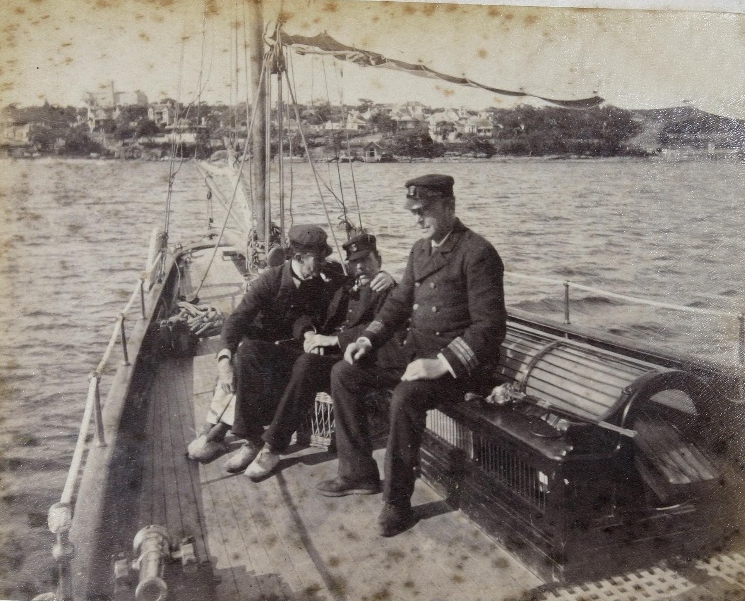
from ANMM/McCormick album
The inside is divided into separate cabins, two of which are fitted with walnut and oak, and upholstered with the best of material. The decks are of yellow pine, caulked and paid with marine glue. The hull is very strongly built of hard-wood on the bottom and kauri pine above, with fitted and bent timbers, to which through the keelson are bolted 30 tons of lead, besides which she has about 4 tons of trimming ballast. The hatches, skylights, and coamings are all made of teak. The lengths of the spars for cutter rig are - Mast, deck to hounds, 38ft. 9in.; topmast, 32ft. 9in.; main racing boom, 52ft.; gaff, 35ft.; bowsprit, outboard, 25ft.; three topsail yards of 32ft., 16ft., and 6ft. respectively, with jacky ards of 26ft. 6in. and 15ft. for the two largest. The spars for the yawl rig measure - Mainmast, same as cut; main boom, 40ft. 6in.; gaff', 21ft.; jigger mast, 21ft. 3in.; boom, 17ft.; gaff, lift. 6in. Her total sail area is about 4136 square feet. The sails were imported from England, being from Lapthorne's loft, and, it is said cost upwards of £300. Her displacement is 50 tons. She is with all canvas 41 rating, and without her square-heated topsail 39 rating.THE YACHT 'ERA.' (1890, March 20). Illustrated Sydney News(NSW : 1881 - 1894), p. 4. Retrieved from http://nla.gov.au/nla.news-article63610629
This article, with some of those great old photographs from 'Photographs of boating on Pittwater including steam yacht ENA', also points out that from the outset those yacht clubs that did visit here from early on, the RSYS and the RPAYC when it was still the PAYC, included the locals in their Basin Regattas. NB: 'Elliott Island' in this case was a former name for Lion Island:
Sailing Notes.
Easter Cruise and Regatta.— Royal Sydney Yacht Squadron.
.jpg?timestamp=1567239765467)
.jpg?timestamp=1567242416007)
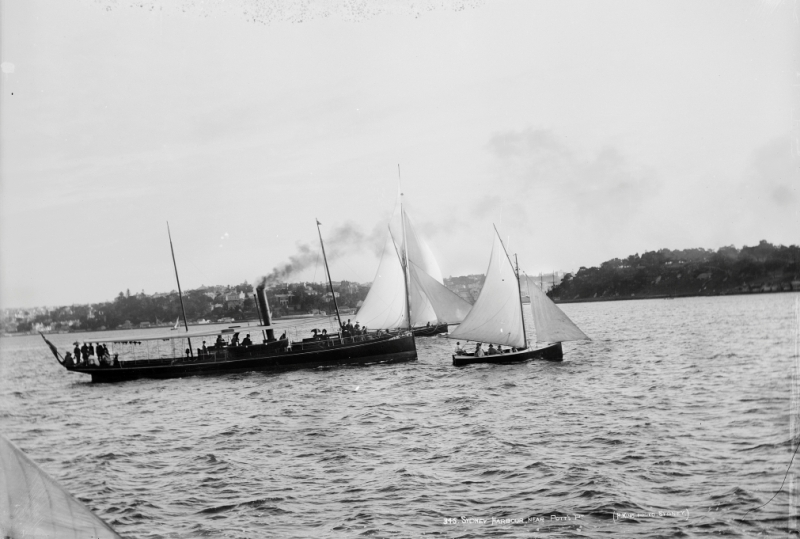
Ena II on Sydney Harbour 1890's. Kerry Image Courtesy Powerhouse Museum Tyrell Collection on Flickr.
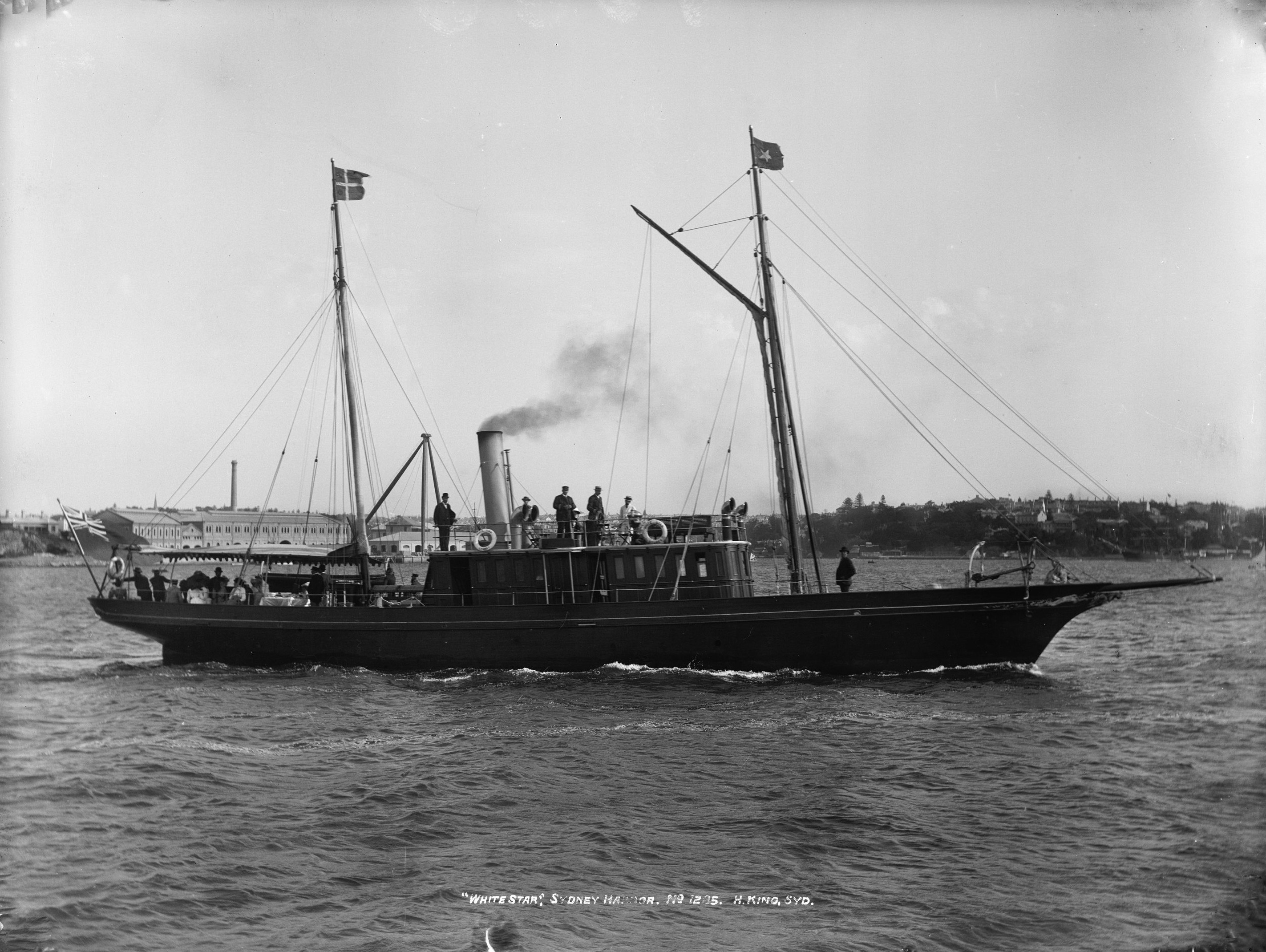
'White Star' on Sydney Harbour, c. 1880-1893 - courtesy Tyrell Photographic Collection, Powerhouse Museum
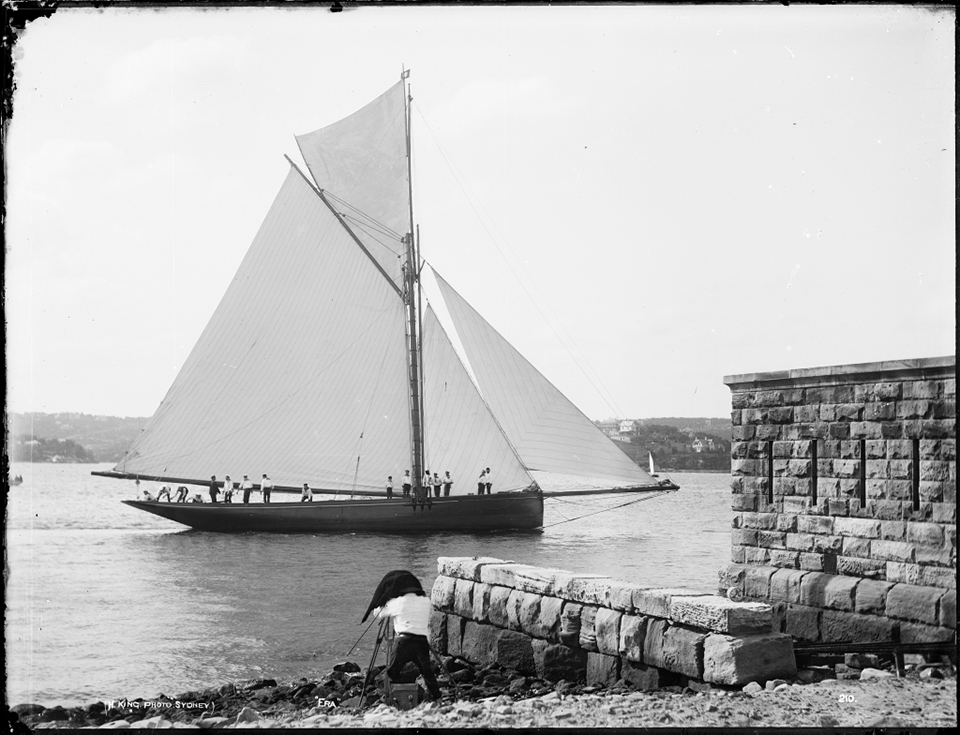
The Yacht 'Era' 1890. photo By Henry King. Courtesy of Powerhouse Museum [85/1285-165] (Tyrrell Photographic Collection.
.jpg?timestamp=1567239113758)
AQUATICS. Easter Cruise.
A meeting of the committees of the Royal Sydney Yacht Squadron and Prince Alfred Yacht Club was held a short time back for the purpose of discussing the best means of carrying out the proposed Easter cruise. It will be remembered that a successful regatta was held under the auspices of the Royal Sydney Yacht Squadron last year on the waters of Pittwater, Broken Bay. On that occasion there were several races, including all yachts handicapped under cruising canvas, bona fide fishing-boats, and quite a number of rowing events m the various yachts dinghies. The outcome of the meeting held above was, on the proposition of Mr A A Griffiths (vice-commodore of the Prince Alfred Yacht Club), unanimously carried.
It was as follows -That all yacht-owners be requested to rendezvous at the "Basin" Broken Bay, this morning, when a draft programme will be submitted. This, it is expected, will embrace a number of sailing and rowing events sufficient to fully occupy the following day (Saturday). A handicap race back to Sydney Harbour on Easter Monday by those yachts whose time is limited will wind up what at present promises to be the most successful cruise, numerically speaking, ever hold by the yachting fleet of Port Jackson. Fine weather is the only thing necessary to make it so. Several of the yachts got away yesterday afternoon and evening with a E.S.E. breeze, and should have made a fine run up. AQUATICS. (1893, March 31). The Sydney Morning Herald(NSW : 1842 - 1954), p. 6. Retrieved from http://nla.gov.au/nla.news-article13903258
One more - just to show off those wonderful images from the ANMM/McCormick album:
Sailing Notes.
The number of yachts and boats that made for Broken Bay during the Easter holidays was quite up to the average. Most of them started on Thursday afternoon, and, as the wind dropped light, they made a long passage. Thelma and Sao got there the same night, but most of the yachts were becalmed all night outside. On Friday evening the following yachts were moored in the basin Era, Archina, Thelma, Electra, Isea, Violet, Guinevere, Zerelde, Assegai, lone, Freda. Lah Loo, Thisbe ; also several open and half-decked boats. Sao, Era, Oithona, and Iris were up the river, and magic in Evening Bay.
.jpg?timestamp=1567239252720)
from ANMM/McCormick album
.jpg?timestamp=1567242950052)
from ANMM/McCormick album
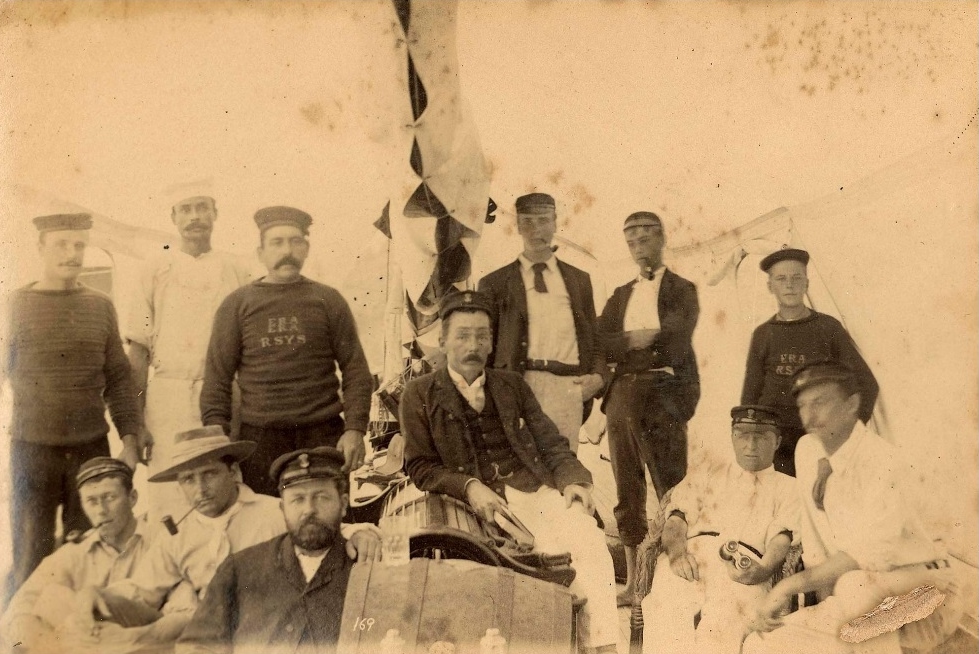
from ANMM/McCormick album
On Saturday morning a meeting was held on board the Era, and a programme of races arranged. The following races took place : — All Yachts, handicapped, under fore-and-aft canvas only. Course : From a flying start at noon from a line between two mark boats moored in the outer basin down to and around Elliott Island, thence round the flagship and a buoy off Barranjoey, and back to the flagship, a distance of about 11 miles. Pair three prizes. — Assegai (Mr. P. H. Sullivan), 9 minutes, 1 ; Archina (Mr. A. A. Griffiths), 7} minutes, 2; Lah Loo (Mr. W. H. Murrell), 35 minutes, 3. Other starters : Thelma (Mr. J. F. Hoare), scratch; Electra (Mr. H. L. Thompson), 7 1/2 minutes; Guinevere (Mr. H. 8. Harden), 16 minutes; and lone (Mr. F. Woolcott-Waley), 20 minutes. Start at noon, wind E.N.E., light.
Assegai was first away, followed by Archina, Guinevere, Thelma, Electra, Lah Loo, aad lone, in that order. Working out of Pittwater, Archina took first place, with Thelma second. lone, having a fortnight's stores on board, was left a long way behind. The same order was kept to the flagship.
Making- to the buoy at Barrenjoey, Thelma and Assegai got a slant of wind from the 8.E. This put them ahead of Archina, but Archina picked this up again ; and the finish was — Archina, 3h. l8m. 22s. : Assegai, 9h. 20m. 9s. ; Thelma, 8h. 21m. 34s. ; Electra, 3h. 29m. 34s. ; Lah Loo 8h. 36m, 15s. Thus the Assegai heat the Arniiinn. by 43 seconds, the latter beating the Lah Loo by 8 minutes 23 seconds, the latter securing the third' prize by 1 minute 19 seconds from the Thelma. With the exception of the Assegai, which was sailed by George Ellis, the rest of the fleet were in charge of their respective owners.
.jpg?timestamp=1567239317062)
from ANMM/McCormick album
Bona Fide Fishing Boats, handicapped, under ordinary working canvas, no extra sails allowed. Conditions as to prizes were— three starters or no race, five starters or no second prize, seven starters or no third prize. Course : From the basin round a buoy off Barranjoey, round the flagship, thence round the buoy off Barranjoey, and back to the finish between a flagmark and the flagship. Time allowance, 1 minute per foot.— Ettie, 23ft., 13. Strongman, scratch, 1 ; Little Bill, 20ft., J. Smith, jun., 4} minutes, 2. Other starters : Our Boys, 22ft., J. Smith, 1} minute, and Maid, 19ft., T. Wilson, 6 minutes. The fishing craft were despatched at 2 p.m. in a light air, which the wily crews knew how to make the most of. The Ettie, followed by the Little Bill, soon outsailed their opponents, and in that order rounded the buoy off Barranjoey. On the second round Little Bill passed Ettie off Mackrell Beach. A dock calm followed. Shortly before dark the wind came westerly with heavy squalls of rain, and brought the rear boats up. Ettie passed Little Bill, and, the wind dropping again, these were the only two to finish. Ettie took first prize and Little Bill second.
Yachts' Hands in yachts' dingies (handicapped) ; prizes £2, £1, 10s. Course : From the flagship round a flagboat moored in the middle of the bay, round the yacht Archina, and back to flagship. — J. Powell (Electra), 1 ; W. Fletcher (Era), 2; W. Wnxton (Era), 3. Other starters : Max (Era), Smith (Era), Alf (Archina), Johnson (Violet), J. Evans (Thelma), Brown (Assegai). Powell soon took the lead and kept it to the finish, with Fletcher second, and Wrixton third. Amateurs, single sculls in yachts' dingies. Course : From the flagship round the yachts Electra and Violet and back to the flagship. Prize, a trophy.— Mr. E. A. Pearson (Freda), 1 ; Mr. N. Dangar (Era), 2 ; Mr. G. Trouton (Archina), 3. Other starter : Mr. J. Boxburgh (Thelma).
Dangar and Boxburgh fouled soon after the start, and took Bome time to get dear. Pearson got away and had an easy win, Dangar and Trouton being second and third. Bain prevented the double -sculling race for yacht hands and the gig and dingy chase from bathing place.
In the evening a display of fireworks lit up the bay. A quiet Sunday was spent. On Monday Bronzewing and Magic started after breakfast, the rest of the fleet at noon, for Sydney. With a strong westerly wind and smooth sea quick passages were made. Sailing Notes. (1893, April 8). The Sydney Mail and New South Wales Advertiser (NSW : 1871 - 1912), p. 730. Retrieved from http://nla.gov.au/nla.news-article162196515
.jpg?timestamp=1567239357891)
from ANMM/McCormick album
The Era changed hands, as all these sturdy yachts do, a subsequent owner being Nicholas Johnson of Sydney. She was then purchased by Charles Nelson on behalf of Winter, Brandt & Co. of Geraldton in Western Australia, and sailed in full racing trim by Nelson to Fremantle to become a fishing vessel. The voyage took only 21 days, which was considered to be a very fast passage at that time. One of the conditions of the sale was that the Era be taken out of eastern states waters, as Milson could not bear to see her converted into a fishing boat.
In Fremantle the vessel’s large counter stern was cut off, the interior stripped, and a 16000lb (7273 kg) capacity icebox installed. The purchase cost of the Era is said to have been recovered from the sale of its luxury fittings. The ketch was then used as a mother ship to smaller fishing boats at Shark Bay, taking their catch to markets in Geraldton and Fremantle. The vessel retained much of its racing yacht speed after alteration—‘On a trip to [from] Shark Bay, skippered by Ben Green, the Era gave the State Ship Koolinda a start from the Carnarvon jetty and beat her to Geraldton by several hours’ (Cooper, 1996: 96). The 40 hp motor fitted in 1924 was seldom used. This engine only lasted three years, and for the next 23 years Era was worked without an engine. In 1950 a 40 hp Lister motor was installed.
Its great spread of canvas enabled the boat to often cover the distance from Fremantle to Geraldton in 23 hours. On a later voyage it was stated that on:
One trip from Red Bluff to Fremantle, a distance of approximately 600 miles, was completed in 68 hours, and on that occasion several periods of contrary winds were encountered, and occasionally the vessel was becalmed (Burns, 1978).
It's also worth noting that this would probably have been with a full load of fish for the Fremantle market, collected from numerous other smaller boats working in the area.
The Era was the cause of considerable concern in October 1934 when a fisherman named Frank Money (also referred to as Mooney) came across what appeared to be a sunken vessel near Leander Reef, 9 miles south of Dongara and 7 miles offshore. Sticking up 3–4.6 m above the surface of the sea were two masts. Money could approach no closer than 100 m to the spars, but knew that the depth of water at that place was 6 m. A party of fishermen lead by George Travia subsequently made an extensive search of the beach for clues to the wreck, but without success. Later the party went to the site in a launch, and found that the ‘wreck’ was actually the mast and bowsprit from the Era. These had been snapped off and swept overboard some six weeks previously during a storm. Amazingly, both spars had then been caught on rocks 6m underwater in such a way that they remained upright.
On 16 July 1928 a strong southerly wind caused the Era to break its mooring and drift down Geraldton Harbour until it hit the viaduct. It was badly holed and sank quickly, a contributing factor being her heavy lead keel.
After several weeks underwater the Era was raised, using drums filled with air. A refit was carried out on the slipway in Geraldton and the vessel was launched back into the fishing fleet. Masts and rigging were replaced at this time. She finally sank on 28 April 1958 in South Passage, Shark Bay, where the lead keel remains.
Most sources state that Era was built in 1887, as the first article above shows. However Harry Akerstrom who worked on the vessel a few years before she was finally wrecked in Shark Bay, says that:
Era…was an 80 foot racing yacht type drawing about 11 ft of water, she had a lead keel, do not know exact tonnage of lead but it was a fair amount, beautiful fishing boat, do not know who she was built for, but do know she was built in 1883, as it was stamped on its rudder stock, a big brass plate holding the tiller. There was no wheels in those days (Kerr, 1988: 228).
If this date is correct, Era was 75 years old at the time she was finally lost. If 1887 is the correct date of building, Era was still an exceptionally old boat in 1958.
The Era as a fishing boat was a specialist vessel and one of the forerunners of modern carrier boats, today used extensively in the rock lobster fishing industry along this section of the Western Australian coast. She was also exceptionally well designed and constructed to have had such a long working life, firstly as a racing yacht and later as a fishing craft. Though badly damaged against the viaduct at Geraldton and remaining underwater for several weeks in the harbour while salvage was organised, the owners obviously considered it valuable enough to warrant the financial outlay of having the boat repaired and put back into service. [2.]
The ANMM isn't the only place wonderful old photographs of these The Basin Regattas and visitors may be found. Those great photographers of earlier years, some uncredited, showed off Estuary visitors in articles that may be found in Trove, in images that may be seen in the State Library of NSW, NSW State records & Archives, The National Library of Australia, the State Libraries of Victoria, South Australia, Queensland, Western Australia, the Powerhouse Museum's Tyrell collection and even in the family albums of residents whose ancestors have sailed here a few generations ago.
The Sydney Mail and New South Wales Advertiser is filled with some great images into The Basin as a Yachtsman's Paradise:
A FAVOURITE HOLIDAY RESORT
THE BASIN, BROKEN BAY
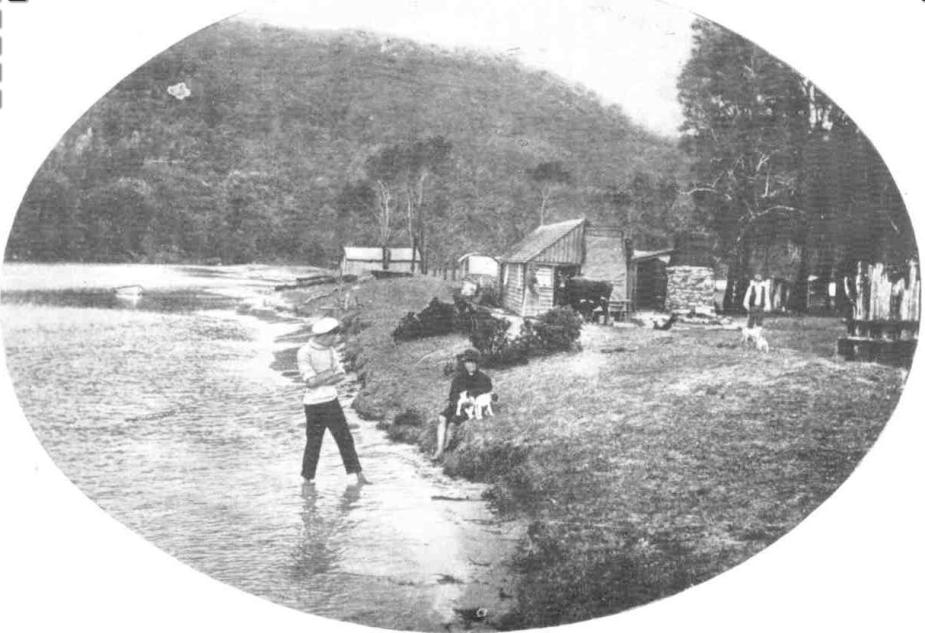
A FISHERMAN'S HOME AT THE BASIN, WHERE MRS. MORRIS HAS RESIDED FOR 37 YEARS.
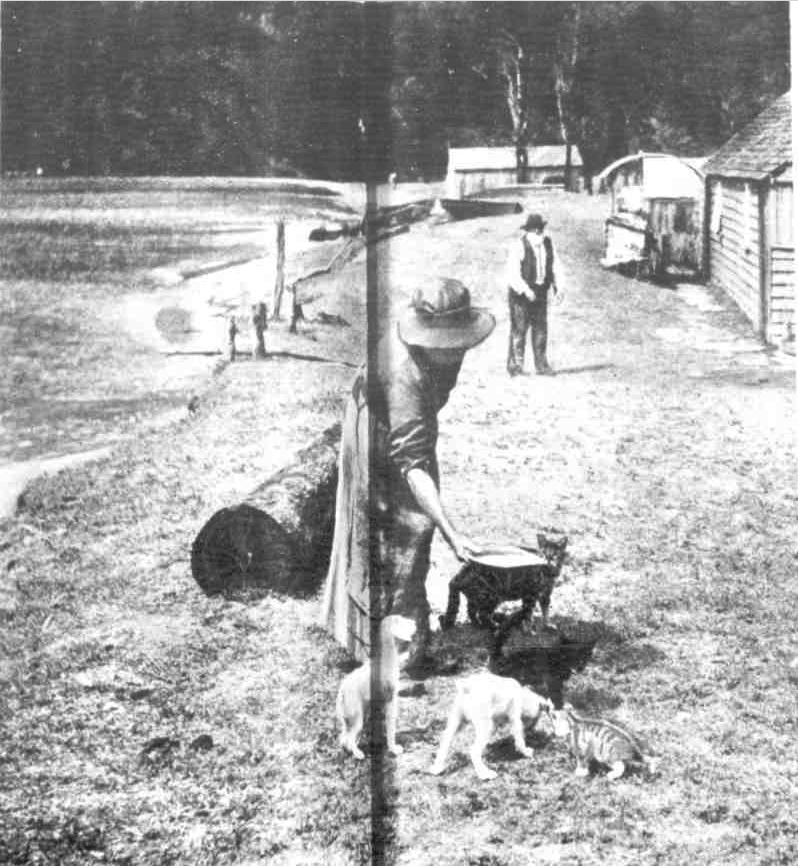
MRS. MORRIS AND HER PETS.
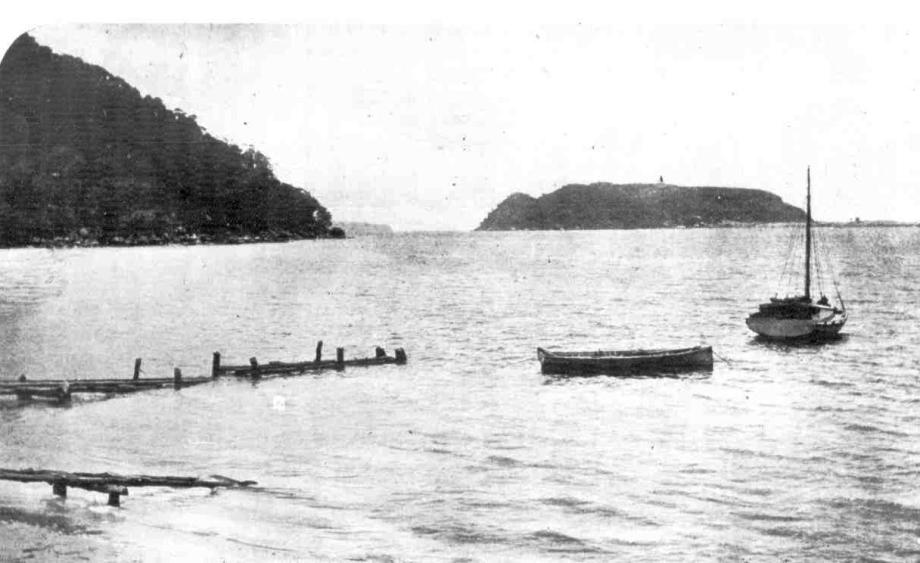
ENTRANCE TO THE HAWKESBURY RIVER. -THE BARRANJOEY LIGHTHOUSE.
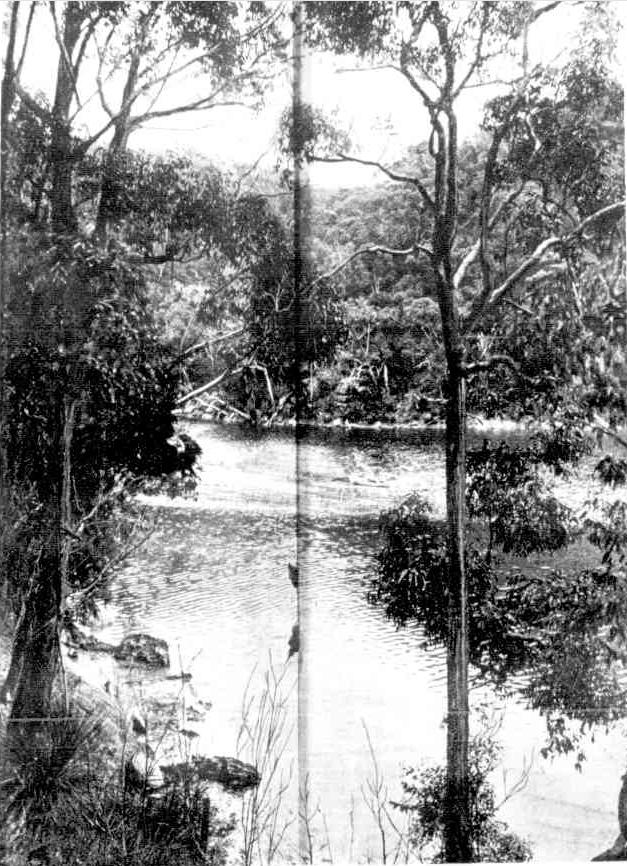
HEAD OF THE BASIN. THE BASIN, BROKEN BAY, NEW SOUTH WALES.
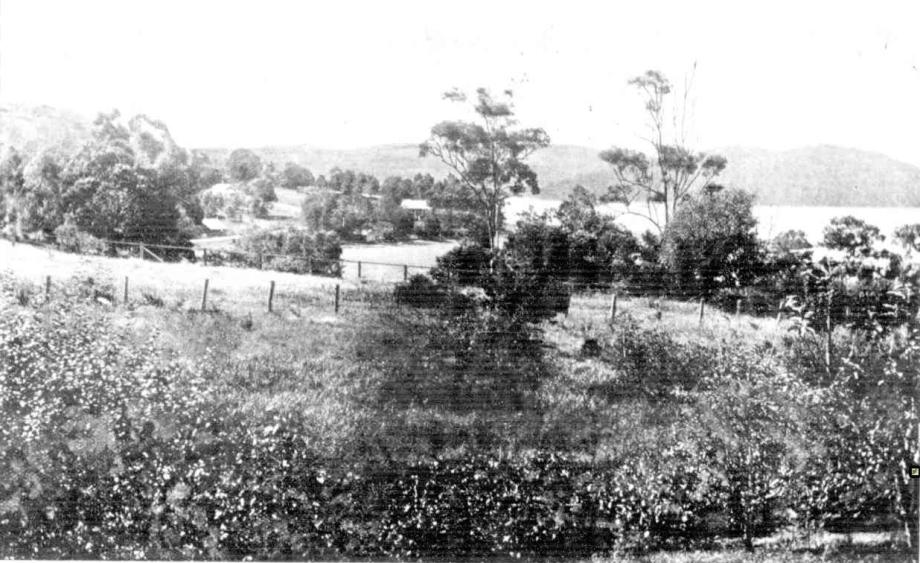
BAY VIEW, PITTWATER. (possibly included here as the photographer was transported to The Basin from the Bayview Wharf)
AN IDEAL CAMPING GROUND, HAWKESBURY RIVER.
A FAVOURITE HOLIDAY RESORT. (1903, December 30). The Sydney Mail and New South Wales Advertiser (NSW : 1871 - 1912), , p. 1706. Retrieved from http://nla.gov.au/nla.news-article164902107
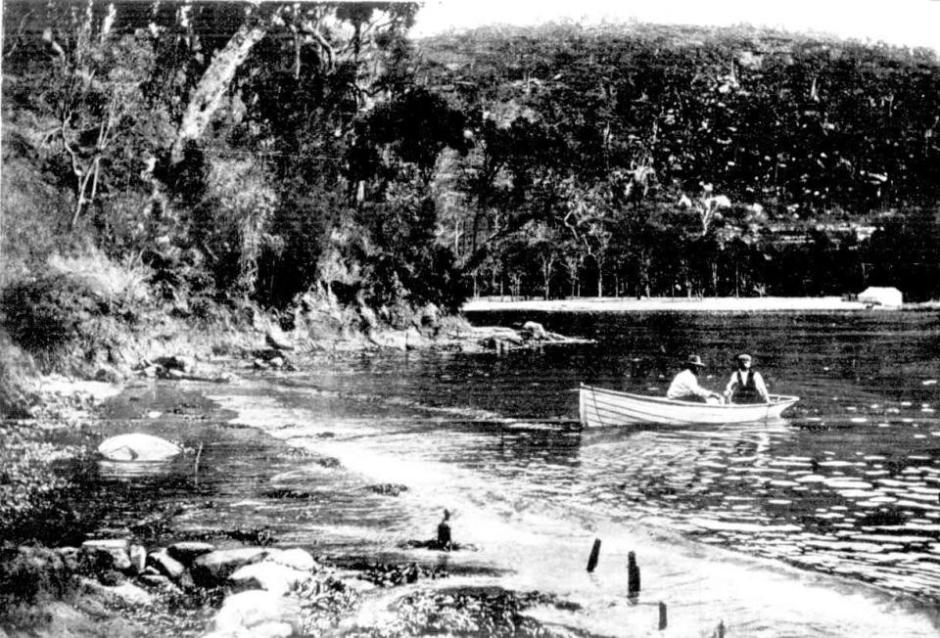
Above: "AN IDEAL CAMPING GROUND, HAWKESBURY RIVER. "1903 The Sydney Mail and New South Wales Advertiser article
Below: "GRILLED FISH FOR BREAKFAST." 1903 The Sydney Mail and New South Wales Advertiser article
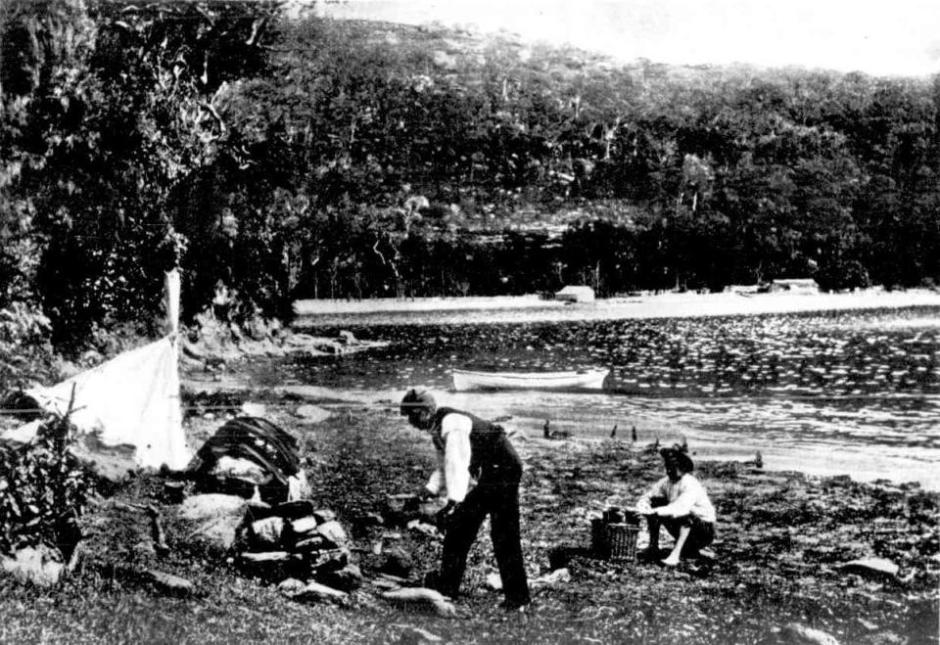
Apart from these beginning, height and end of Sailing Season insights the BIG one for Pittwater in earlier days was the second restart of the annual Pittwater Regatta, born from two Bayview youngsters (at that time) the John Roche and William [Don] Taylor boys who had a ace against the Queensland Crouch boys up the estuary, around Lion island and back again in 1906. Johnny Roche and don Taylor had built the boat they raced and both would continue 'messing about in boats' their whole lives.
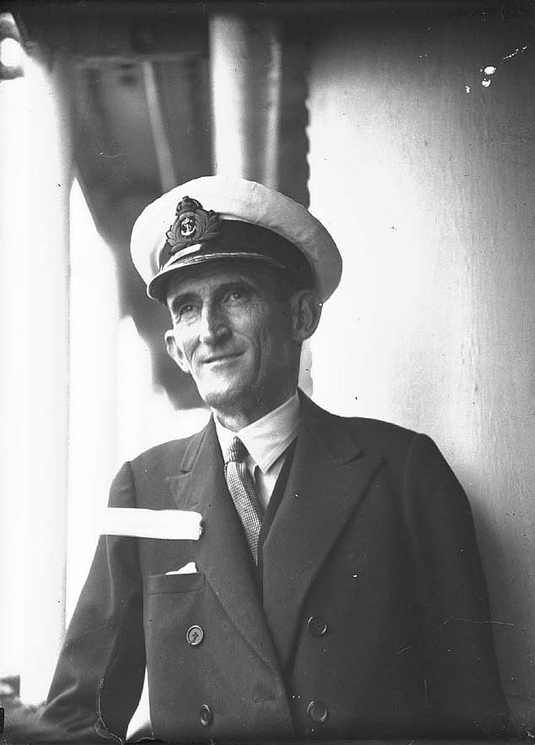
Portrait of a Mr John Roche courtesy ANMM, Object no. 00024319.
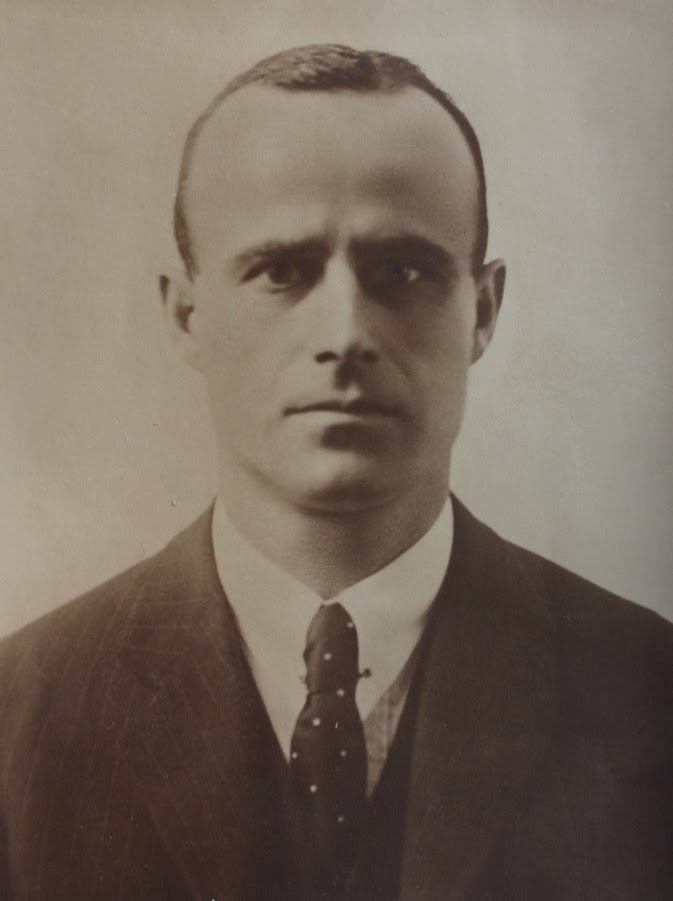
As the popularity of this regatta grew it would seem everyone came to Pittwater for the season and although Pittwater Online has begun exploring the different eras and years of these Regattas from 1906 forward, that work is still not done yet.
On the verge of Pittwater's 2019-2020 Sailing season, and all the numerous Regattas and Races and Social events that will fill the forthcoming Spring-Summer-Autumn calendar before we all shift over to that Winter Sailing Season that goes on around here, one last glimpse into the past that shows in pictures what we're all looking forward to this coming Sailing Season. These photos, from 1932, show that even though Australia may have been in the grip of a financial Depression getting some salt air in your lungs and salt water on your skin was a certain curative for those other kinds of 'blues':
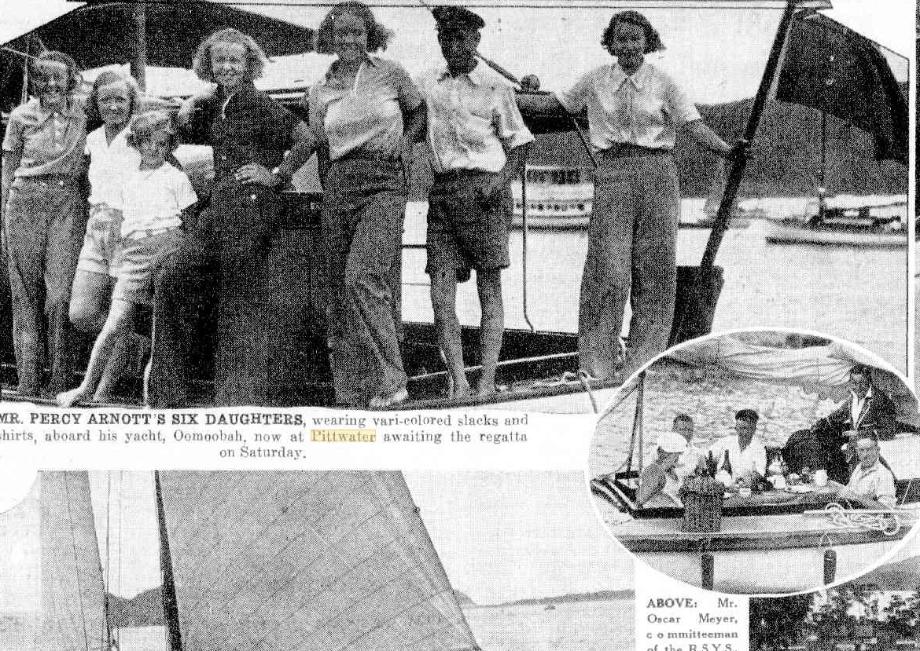
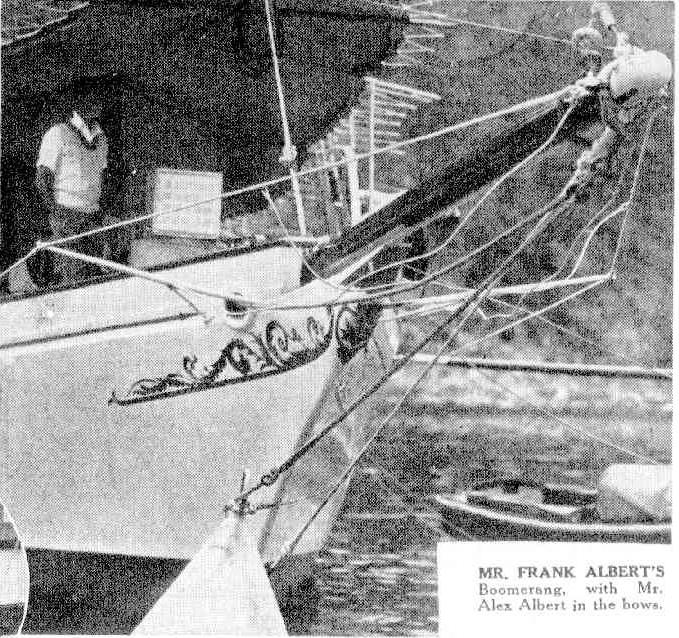
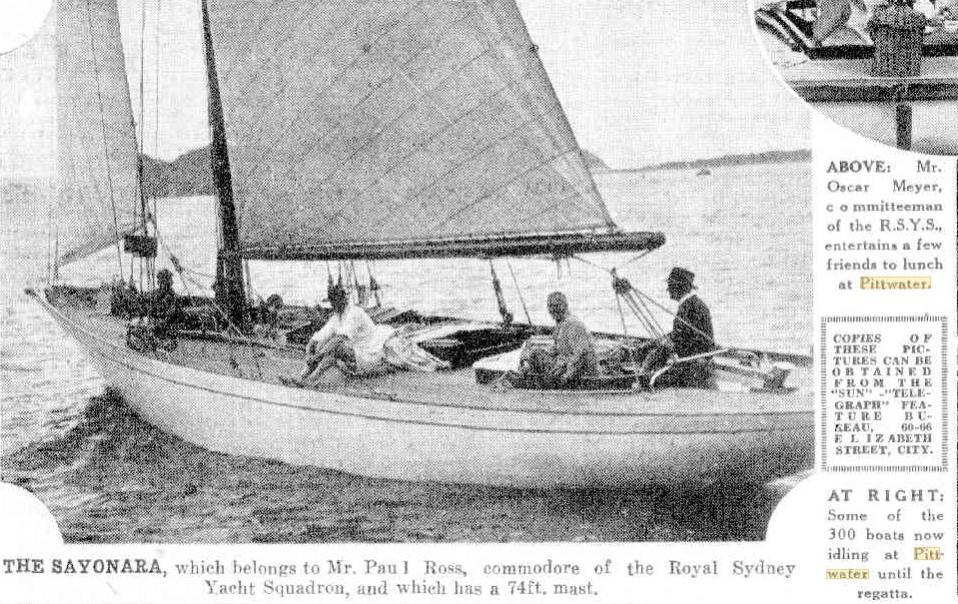
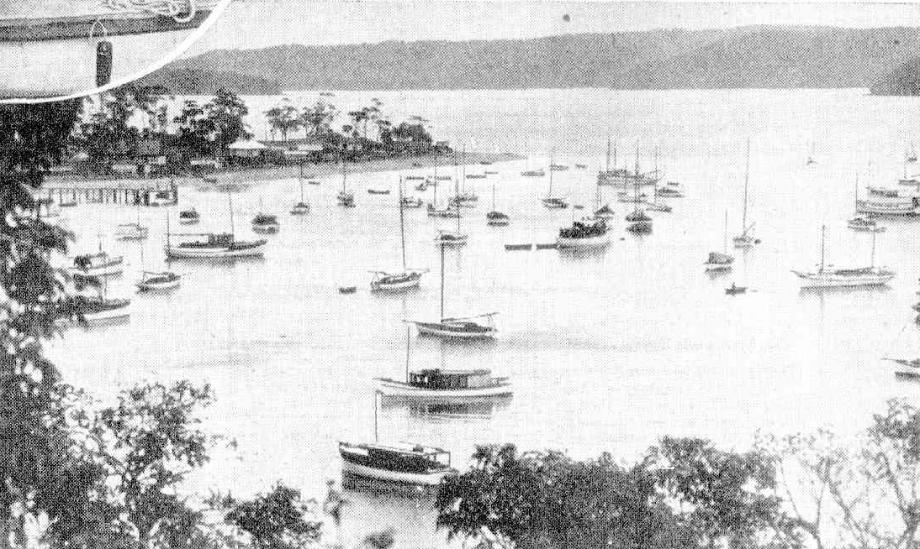
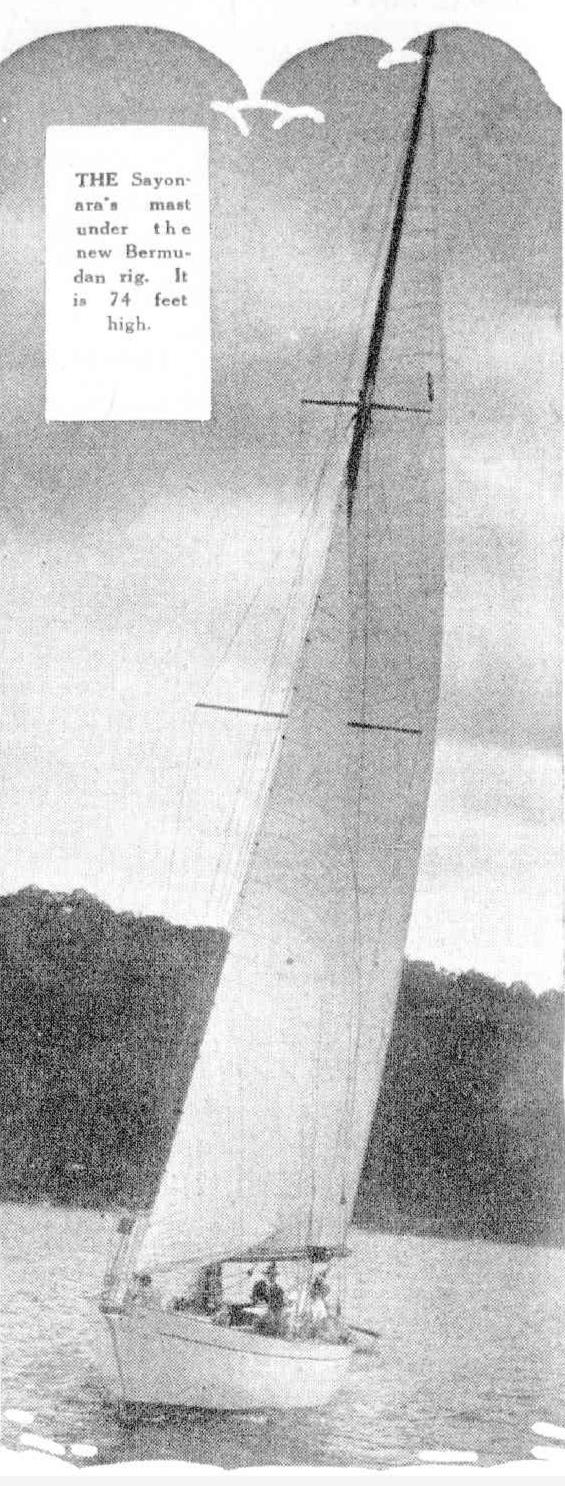
References
- TROVE - National Library of Australia
- Era webpage of SHIPWRECK DATABASES - WESTERN AUSTRALIAN MUSEUM, courtesy Government of Western Australia, retrieved from: http://museum.wa.gov.au/maritime-archaeology-db/wrecks/id-1186
AN APPRECIATION. The 'Late' John Roche. (BY. R.S.S.)
In the experience of everybody, we come across personalities which attract us, for reasons which often. are somewhat hard to define-or, on the contrary, for outstanding qualities, which those who run may read, or, indeed, for some special act of public usefulness, or private unselfishness.
From whatever reason, or from whatever combination of them, John Roche, who died last week, was certainly one of those rare souls, who unconsciously, and without effort, gained among his fellows, their affection and confidence. It was Just his cheerfulness, his placid courage, his elan, and fine conduct of life, which, in his case, had been, in many ways, no easy one, '
Roche was brought up, from his earliest years, on a property on the estuary of the Hawkesbury, owned by his family at Bay View. We all, in our hearts, cherish some spot of this attractive, if difficult world, which we call home, and to which, as poets so often remind us, our wandering thoughts return. John Roche's mind, I do believe, was never far divorced from his beloved Broken Bay. He knew and loved every arm of its far-flung waterways, and he used to dwell with pride on the lush and often exotic vegetation that hid itself, and flourished, in sheltered spots round the creeks of that delectable region.
It followed that he not only liked the trees and fruits of his native bushland, but it was the sea that mostly called him, and so fishing and boats and yachts, or indeed anything that would carry him on the face of the waters, gave him a joy which never paled-a Joy happily shared by many of us who have escaped the devastating malady of golf or other things even less laudable!
But, apart from the prominent positions he has held in the yachting world, and which, Indeed, have been very useful, Important, and unselfish ones in all ways, and about which others are very much more competent to speak than I am-it is rather concerning his character as a man that I would wish to add my little offering to his name and fame.
It was probably known to all who knew him intimately, that from his childhood, he suffered from the after-results of that tragic malady of early life, Infantile paralysis. Most men would have wilted under such a handicap. Not so John Roche-neither in deed, manner, nor word did lie allow his disabilities to alter his way of life. Nor did he ever pour out useless complaints against fate regarding his own great physical drawbacks. Far otherwise was his way, for he always carried a high heart, with a happy smile, and a wholesome speech to sweeten the day's greeting.
I might write much, and with more detail, of this line man's fine record, but it is not necessary, for of those who read tills small eloge of mine, who knew him, they could themselves tell much more of things Indicative of his life-long courage in the face of many difficult, days. We part indeed from "a very gallant gentleman," and a fine sportsman. AN APPRECIATION. (1936, October 20). The Sydney Morning Herald (NSW : 1842 - 1954), p. 10. Retrieved from http://nla.gov.au/nla.news-article17268893
ASC Yachts on Pittwater - Sunday afternoon sailing
